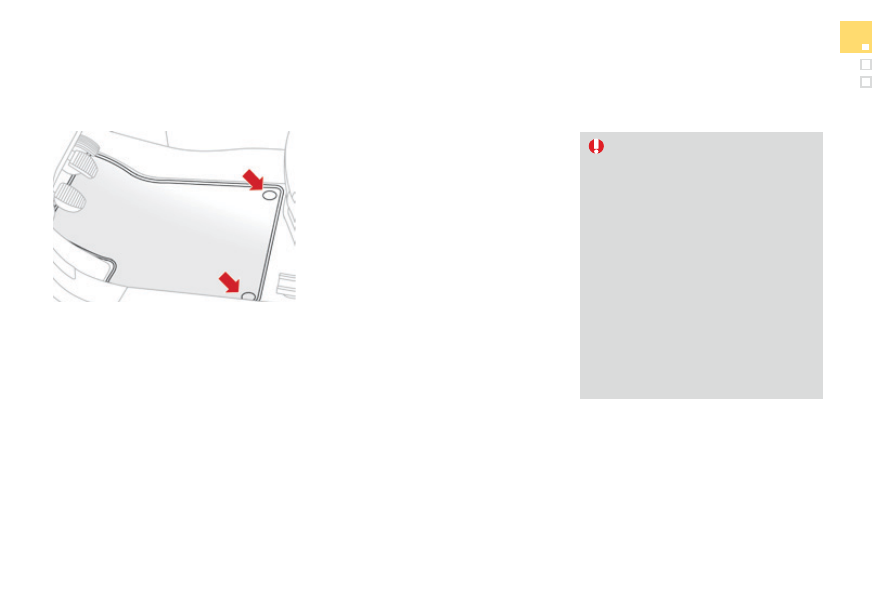Citroen DS3 (2016 year). Instruction - part 7

95
Comfort
DS3_en_Chap03_confort_ed02-2015
Mats
Fitting
When fitting the mat for the first time, on the
driver's side use only the fixings provided in the
wallet attached.
The other mats are simply placed on the
carpet.
Removal
To remove the mat on the driver's side:
F
move the seat as far back as possible,
F
unclip the fixings,
F
remove the mat.
Refitting
To refit the mat on the driver's side:
F position the mat correctly,
F
refit the fixings by pressing,
F
check that the mat is secured correctly.
To avoid any risk of jamming of the
pedals:
-
only use mats which are suited to
the fixings already present in the
vehicle; these fixings must be used,
- never fit one mat on top of another.
The use of mats not approved by
CITROËN may interfere with access to
the pedals and hinder the operation of
the cruise control / speed limiter.
The mats approved by CITROËN have
two fixings located below the seat.